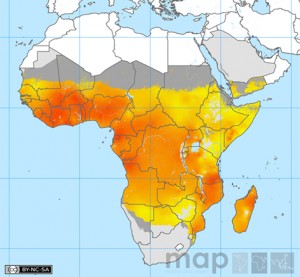QUESTION:
What is the origin of malaria?
ANSWER:
Malaria is caused by a single-celled parasite called Plasmodium; different species cause the different forms of malaria we see in different parts of the world. Malaria has been in existence for millions of years; it likely evolved from similar infections in other apes. Ancient people recognised the symptoms of malaria as early as 2700 BCE, when it was first described in a Chinese medical text. The ancient Romans, Greeks and Egyptians also knew about it, but it wasn’t until the 19th century when the causative agents were first seen in a patient’s blood by a French surgeon called Charles Louis Alphonse Laveran. A few years later, a British Army doctor called Ronald Ross first discovered that the parasites were transmitted via mosquitoes. He won the Nobel Prize for his work in 1902.
